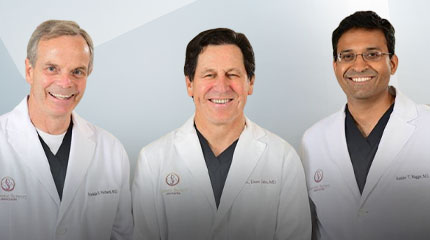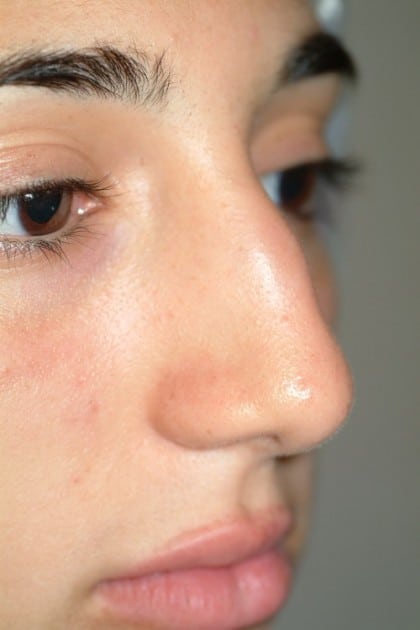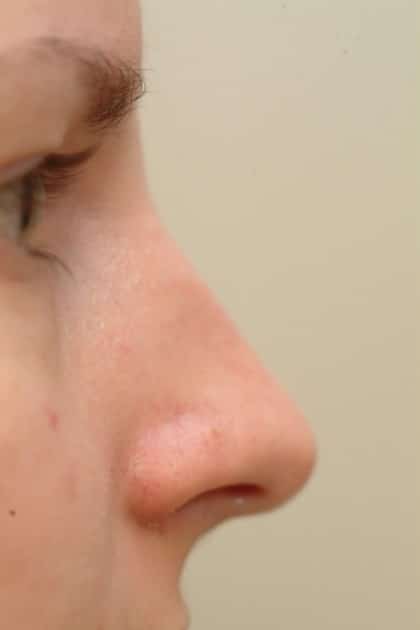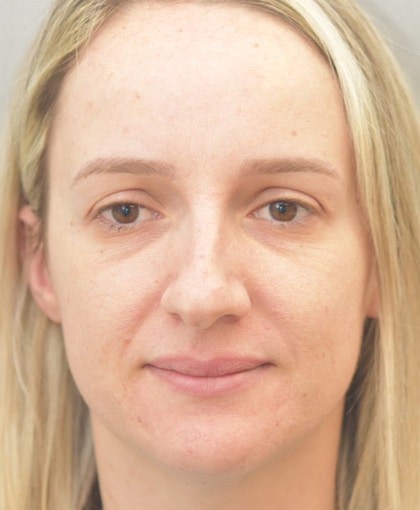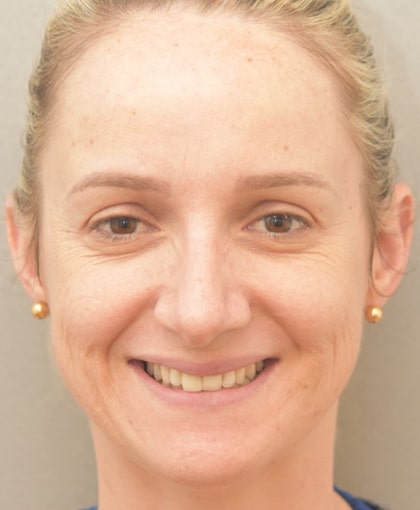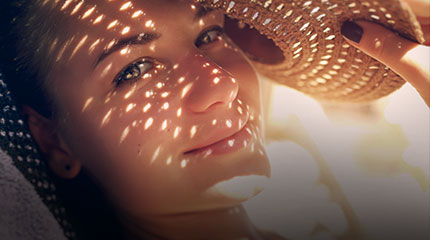CONTACT US
TEXTING AVAILABLE! For a text response feel free to text the number provided on your screen after filling out this form.
Nasal Surgery (Rhinoplasty)
Conveniently located to serve the areas of Maryland, Virginia and Washington, D.C.
The goal of Rhinoplasty is to improve the functionality and/or shape of the nose while bringing symmetry and balance to the face.
What is Rhinoplasty?
Rhinoplasty, or surgery to reshape the nose, is one of the most common of all plastic surgery procedures. It can be performed to improve one’s appearance, but also for reconstructive purposes, which includes correcting birth defects or breathing problems. Rhinoplasty can reduce or increase the size of your nose, change the shape of the tip, remove a hump on the bridge, straighten the nose, improve breathing, narrow the span of the nostrils or change the angle between the nose and upper lip. Much can be done to improve your nasal appearance.
A nose job can improve your appearance, and possibly boost your self-esteem, even with the slightest alteration. Our office is located just 2 miles away from North Bethesda and 5 miles away from Potomac & Rockville.
Reasons To Get a Rhinoplasty Procedure
People may want to get nasal surgery for a number of reasons, but these concerns typically fall under two categories: functional concerns or cosmetic desires. In some cases, people experience both functional and cosmetic nasal issues in which case both can be improved with one surgery.
Functional Rhinoplasty
A very common functional nasal problems are difficulty breathing. This can be caused by enlarged turbinates, deviated septum, or issues deep in the nasal airway. The aforementioned conditions can be present from birth or from conditions that appear later in life, such as injury or cancer or the nasal skin. Previous nasal surgeries that were botched could also cause disrupted breathing. Trimming an excessive amount of cartilage can “pinch” the nose.
There are a number of factors that cause irregular breathing, but your surgeon will take extra special care while performing an examination during your consultation in order to determine the best personalized functional Rhinoplasty procedure. Not only will it leave you with a beautiful nose, but one that you can breathe with ease from.
Cosmetic Rhinoplasty
Cosmetic deformities of the nose can hinder your lifestyle as sometimes they can be embarrassing. These misshaping can appear as a wide base of the nose, drooping tip, a dorsal bump, as well as varying post-traumatic deformities. Cartilage or bone can be shaved from a large nose to give it even in slope. In opposition, if you feel that your nose is too small, cartilage can be harvested from a donor location (ear or rib graft) and used to add stature of your liking to your nose. Prior nasal surgeries can leave you with less than desirable results, in which case one of our Rhinoplasty specialists will listen to your every last nasal concern during your consultation to ensure that this time you receive your aesthetic wishes.
Candidates
Men and women who are seeking a Rhinoplasty procedure have an issue with either functionality or cosmetic concern. Candidates for Rhinoplasty typically seek to:
- Reduce or increase the size of the nose
- Changes size and shape of the nasal tip
- Remove humps on the bridge
- Straighten the nose
- Improve breathing
- Narrow in the span of the nostrils
- Change the angle between the nose and upper lip
It is important that facial growth is complete before considering nasal surgery, which is customarily post-teen years. These patients much are non-smokers and in good health.
Keeping true to your ethnic identity is sometimes a concern, in which case an Ethnic Rhinoplasty can be performed. This is where the functionality and/or cosmetic look of your nose is enhanced while your uniqueness is maintained. The goal of Rhinoplasty is not to change the look of your features but enhance their beauty.
Consultation
When considering Rhinoplasty, there are some things that your doctor will want to go over with you. This will include the structure of your nasal bones and cartilage, the shape of your face, the thickness of your skin, and your age. Although a lot of teenagers may request information about nose surgery, most plastic surgeons prefer to wait until their growth spurt has ended.
One of our board-certified surgeons will perform a thorough examination of your nose, and with your concerns in mind, determine the best-personalized procedure plan to give you optimal results. You will be shown before and after photos of patients with similar cases to give you a general idea of possible results; it is important to remember results do vary. Bringing a picture of your desired results is very helpful.
You will be asked about medical history and any past surgeries you have undergone. Your surgeon may ask you to adjust or discontinue routine medications. Any remaining questions, including pricing inquiries, can be addressed at this time.
At Cosmetic Surgery Associates, we understand that choosing to undergo cosmetic surgery is not an easy decision; therefore, we try to make the process as easy as possible. One of our plastic surgeons will assist you through the entire procedure, from the pre-operative consultation to the recovery process.
Preparation
Rhinoplasty requires several preliminary tasks to be completed prior to your surgery.
Your surgeon will ask you to completed specific medical examinations and tests. You will need to pick up prescriptions for antibiotics and/or pain medications ahead of time so you have them readily available following your procedure. Avoiding anti-inflammatory drugs and herbal supplements for a few weeks is important as they increase bleeding. You will also need to arrange for a friend or family member to drive you home as you will not be able to drive yourself. Further individual instructions may be given to ensure you receive the best results possible.
Types of Rhinoplasty
Primary
Primary Rhinoplasty is a term used for surgery that is performed on a nose for the very first time; no prior surgeries. The main objective of Primary Rhinoplasty is to amend all functional and cosmetic dislikes with just one procedure. The open or closed method can be used for Primary Rhinoplasty; your surgeon will be able to determine the optimal technique for you during your consultation.
Secondary
Secondary Rhinoplasty is a term used for surgery that is performed on the nose of a patient who has already had one or several prior nasal surgeries. Sometimes referred to as Revision Rhinoplasty, this surgery is meant to further alter the shape of the nose for cosmetics, functionality, or both since the patient was displeased with their initial results.
How is Rhinoplasty Performed?
Rhinoplasty procedures are performed under general anesthesia on an outpatient basis.
There are two incision options; the one used will be decided during your consultation. Each has its merits, so your surgeon will choose the method he believes will work best to achieve your specific desired results.
Open Procedure
The incision for the open procedure is made in between the nostrils through the tissue. Nasal cartilage can be accessed with ease since this incision allows skin and soft tissue to be lifted. Cartilage can then be appropriately trimmed into the desired contour. If additional cartilage or structure is needed it can be harvested from an ear or rib graft. Skin and soft tissue are then redraped and the incisions are sutured closed. Any resulting scarring is extremely small and will diminish over time.
Closed Procedure
The incision for the closed procedure is made inside the nose as opposed to externally. The same steps are followed as the open procedure except the skin is not lifted. Scars are not visible, there is less swelling, no damage to the tip of the nose, and the procedure length is shorter.
Recovery
This procedure usually takes one to two hours, depending on the amount of the surgery being performed. After your procedure is over, your surgeon will apply a nasal splint which will stay on for roughly a week. It is best to take a bath as opposed to showering while you wear the splint to avoid water getting on it. Any discomfort can easily be controlled with prescribed pain medication.
Refrain from making over-the-top facial expressions during your recovery period. Do not blow your nose until your surgeon tells you otherwise; this can mess up your results and you can potentially hurt yourself. Contacts are recommended over glasses during this time, but if you must wear glasses you might consider taping them to your forehead so you avoid resting them on your nose.
You are usually able to return to work or school after 5-7 days. Bruising and swelling underneath the eyes can last up to 10 days, but this is normal and will subside on its own or with the help of gentle ice application. Steer clear of strenuous activities for about a month. You are able to see nasal improvement once the splint comes off, but the best results can be seen in 6 months. Improved breathing can be noticed almost immediately.
Schedule a Rhinoplasty Consultation
We encourage all patients interested in rhinoplasty surgery to set up a one on one personalized rhinoplasty consultation with one of our board-certified plastic surgeons. Our office is located just 2 miles away from North Bethesda and 5 miles away from Potomac & Rockville. During the consultation, our surgeons will go over the procedure in more detail, answer any questions you have and determine if rhinoplasty is the best option to get the results you are looking for. Get in touch today to set up your consultation!
Frequently Asked Questions
Can a nose job make your nose smaller?
Can I sleep on my side after rhinoplasty?
Can nasal polyps change shape of nose?
Can rhinoplasty help sinus problems?
Can you die from rhinoplasty?
Do nose jobs last forever?
Do spreader grafts widen the nose?
Does deviated septum surgery change your nose?
Does your voice change after rhinoplasty?
How bad is nose job recovery?
How do I prepare for a nose job?
How long are you swollen after rhinoplasty?
How long do splints stay in after septoplasty?
How long does a nose job take to perform?
How long is recovery from rhinoplasty?
How should I sleep after nose surgery?
Is nose job permanent?
What are the side effects of rhinoplasty?
What is closed rhinoplasty?
What types of nose jobs are there?
Why do nose jobs collapse?
Will the tip of my nose get smaller after rhinoplasty?
Our Plastic Surgery Associates team includes Dr. Franklin Richards, Dr. A. Dean Jabs, and Dr. Keshav Magge. Each of our plastic surgeons is board-certified, and together they have over 60 years of combined experience. Drs. Richards, Jabs, and Magge are all highly qualified in procedures for the face, breast, and body, and pride themselves in providing excellent results through our state-of-the-art, Quad A certified operating centers


